
Estimated reading time: 12 minutes
In the sketch below, you can see the tree’s tangled branches and leaves under a brightly lit moon. The artist’s realistic texture, shading, and form make it possible to identify each element in the drawing and allow for an eidetic snapshot of a nighttime scene.

The artist Gustav Klimt is also associated with realistic features, particularly the faces, but in his artwork, the realism is often juxtaposed with flattened patterns. For example, in his portrait of Fritza Riedler below, Klimt painted the face in a true-to-life form to allow the identification of the sitter. However, the background is more ornamental and two-dimensional. The chair pattern, as well as the wall colors, are not encountered in everyday life, and there is little to no depth information. This portrait style in which a flat, patterned background contrasts strikingly with realistic face and bodily characteristics is typical of some of Klimt’s most renowned works.
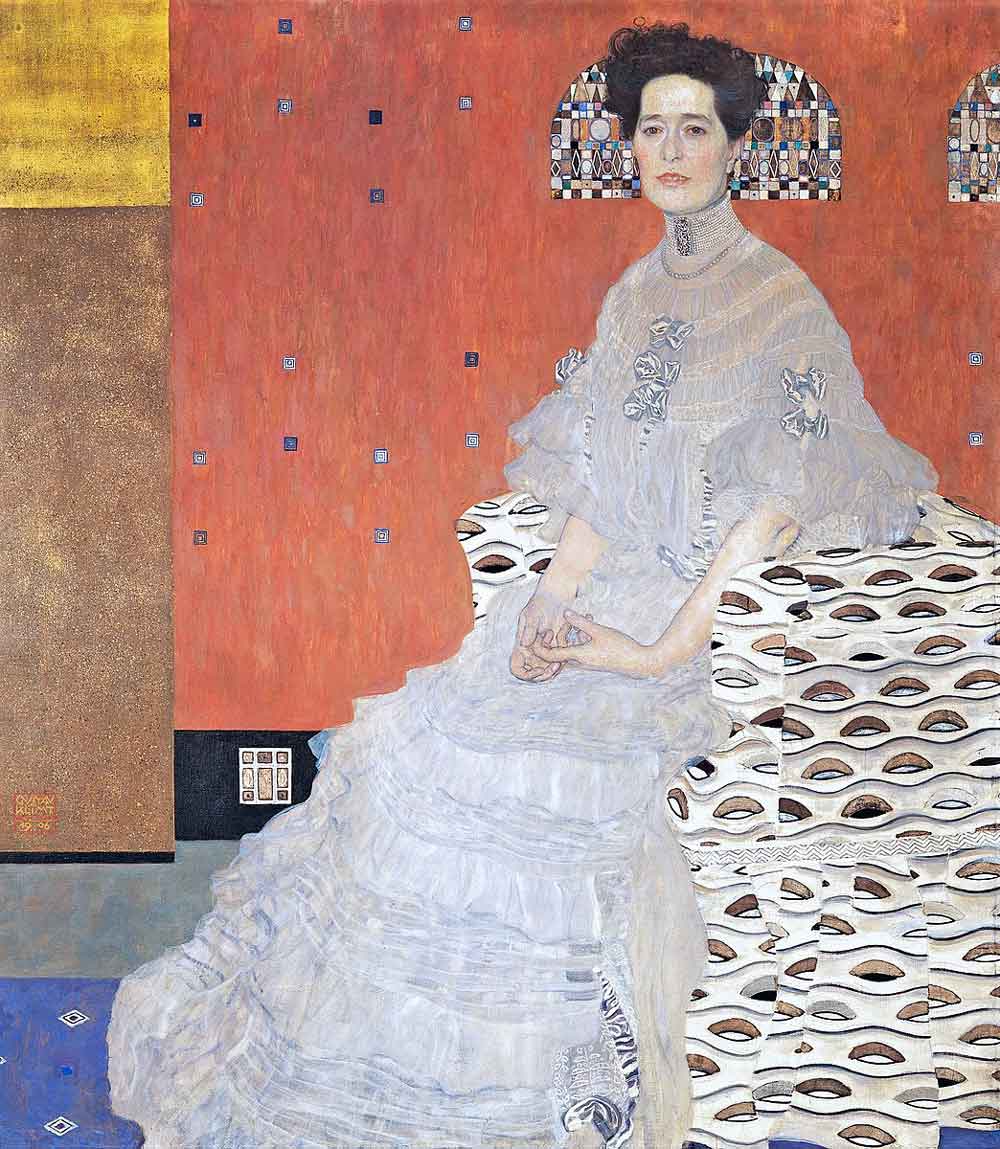
Portrait of Fritza Riedler
A Visceral Response to Klimt
Klimt’s distinctive portraits fall between two artistic modes of the period – traditional and modern. Before 1900, the sitter, clothing, and furniture were generally depicted realistically in the traditional style. In contrast, in the early 1900s, the modern, abstracted style saw a move into abstracting items to extreme two-dimensional flatness. Although Klimt painted in both styles, he remains celebrated for his merging of traditional realistic faces and the modern flatness of the context. See below for examples of Klimt’s paintings in all three styles, including his signature, hybrid style.
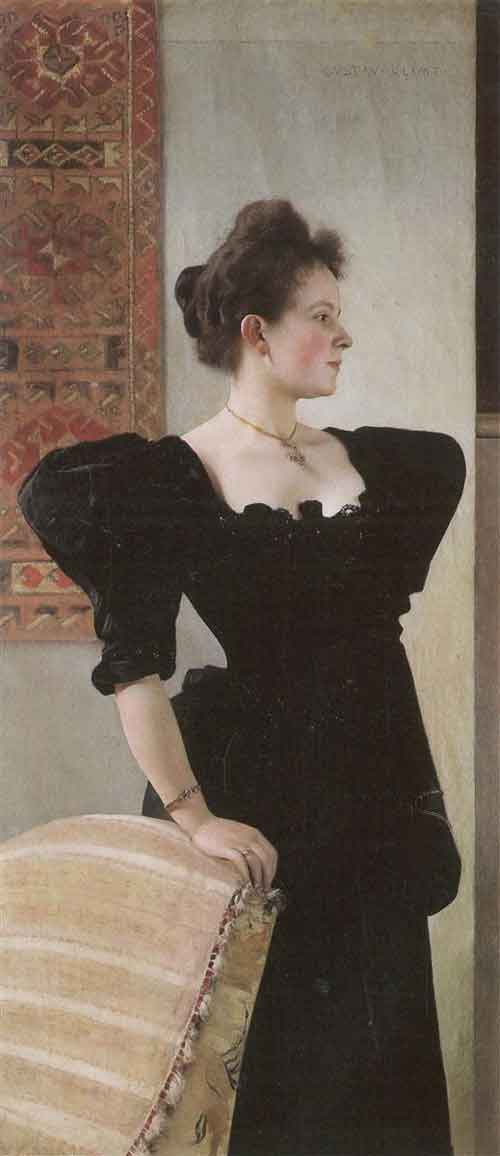
Gustav Klimt (1894)
Portrait of Marie
Breunig
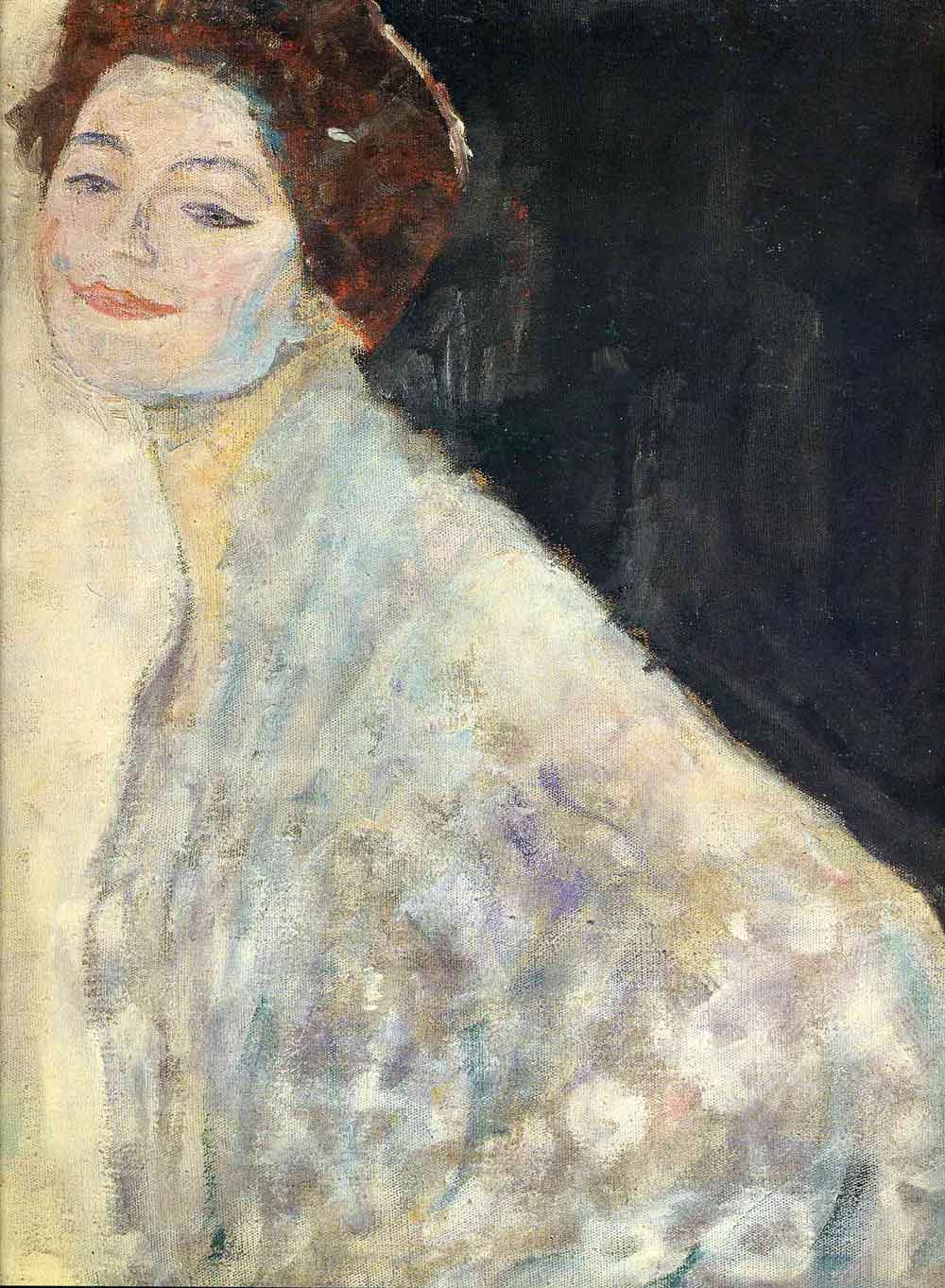
Gustav Klimt (1918)
Lady in White
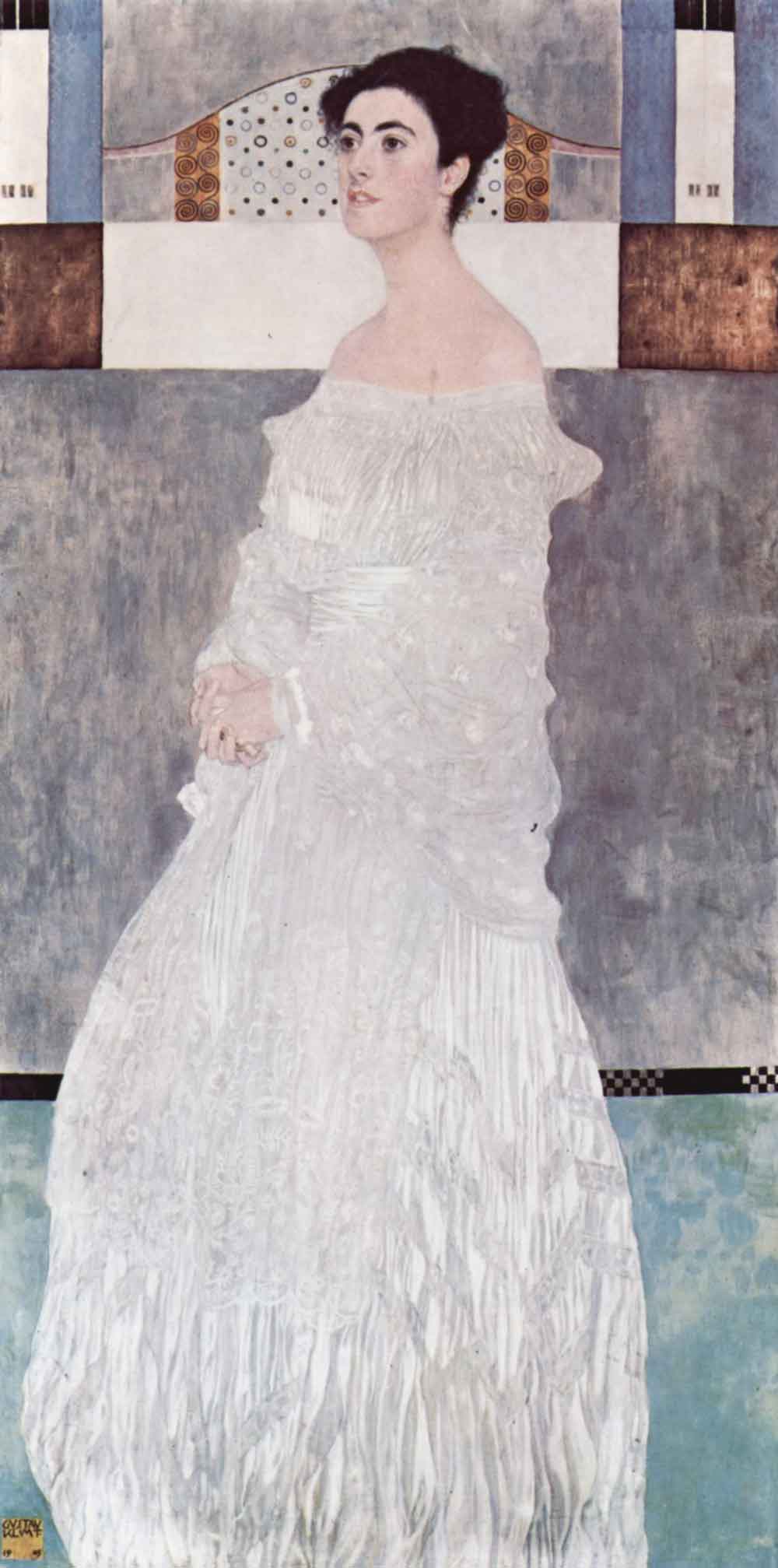
Gustav Klimt (1905)
Margaret
Stonborough-
Wittgenstein
Art critics have described an almost visceral response when viewing Klimt’s paintings. For example, Adrian Brijbassi described The Kiss as being able to: “Hold your gaze, make you admire its aesthetic qualities while trying to discern what’s beyond its superficial aspects.” To explain the aesthetic experience of viewing a Klimt portrait, the neuroscientist Eric Kandel suggested that “our brains assemble Gustav Klimt’s paintings piece by piece, symbol by symbol, tricking us into sensing the beauty of the whole.”
Do Klimt’s portraits in his signature, hybrid style in fact elicit a unique response in the viewer? Specifically, are viewers more “absorbed” by Klimt’s signature faces and patterns than in other styles (as measured by a higher share of fixations)? And do Klimt’s signature portraits compared to other portrait styles illicit a distinctive physiological response (as indicated by a unique eye-movement pattern)? In a recent paper, Anna Miscenà, Jozsef Arato, and Raphael Rosenberg from the University of Vienna answered these questions using eye-tracking technology.
Eye Tracking Klimt
For the eye-tracking study, participants viewed a series of paintings as if in a museum. An EyeLink 1000 Plus recorded participants’ eye movements while they looked at each painting for 30 seconds. Immediately after viewing a portrait, participants indicated how much they liked it on a 1 to 7 scale to reinforce the instructions to view the paintings naturally, aesthetically as if in a museum. There were 21 paintings in total, with an equal number in each of three styles – abstracted, realistic, and Klimt’s hybrid (see below for examples):
Abstracted Style
Paintings in the abstracted style are characterized by two-dimensional portraits from artists such as Picasso and Van Gogh with contrasting colors and dynamic brushstrokes.
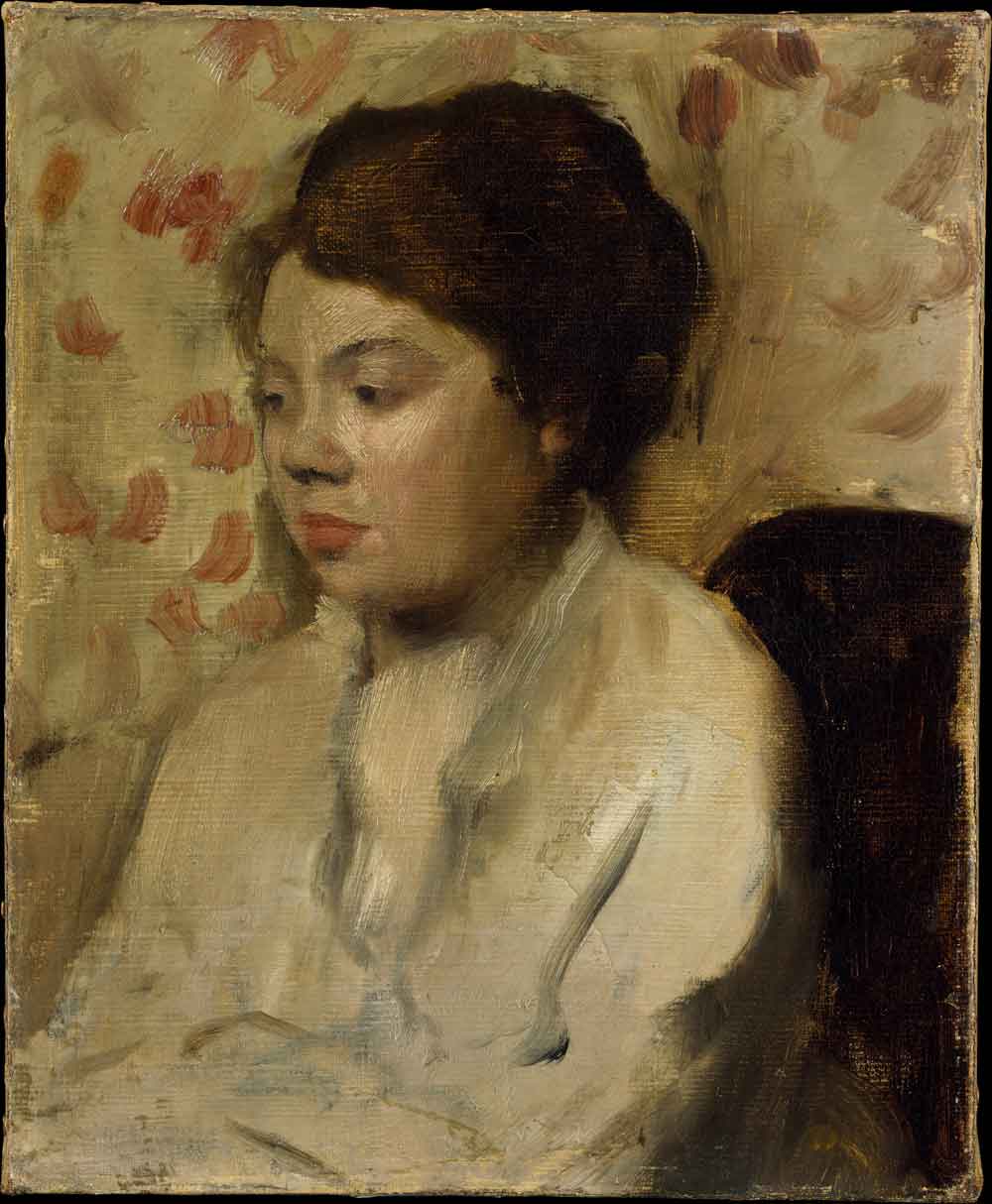
Portrait of a Woman
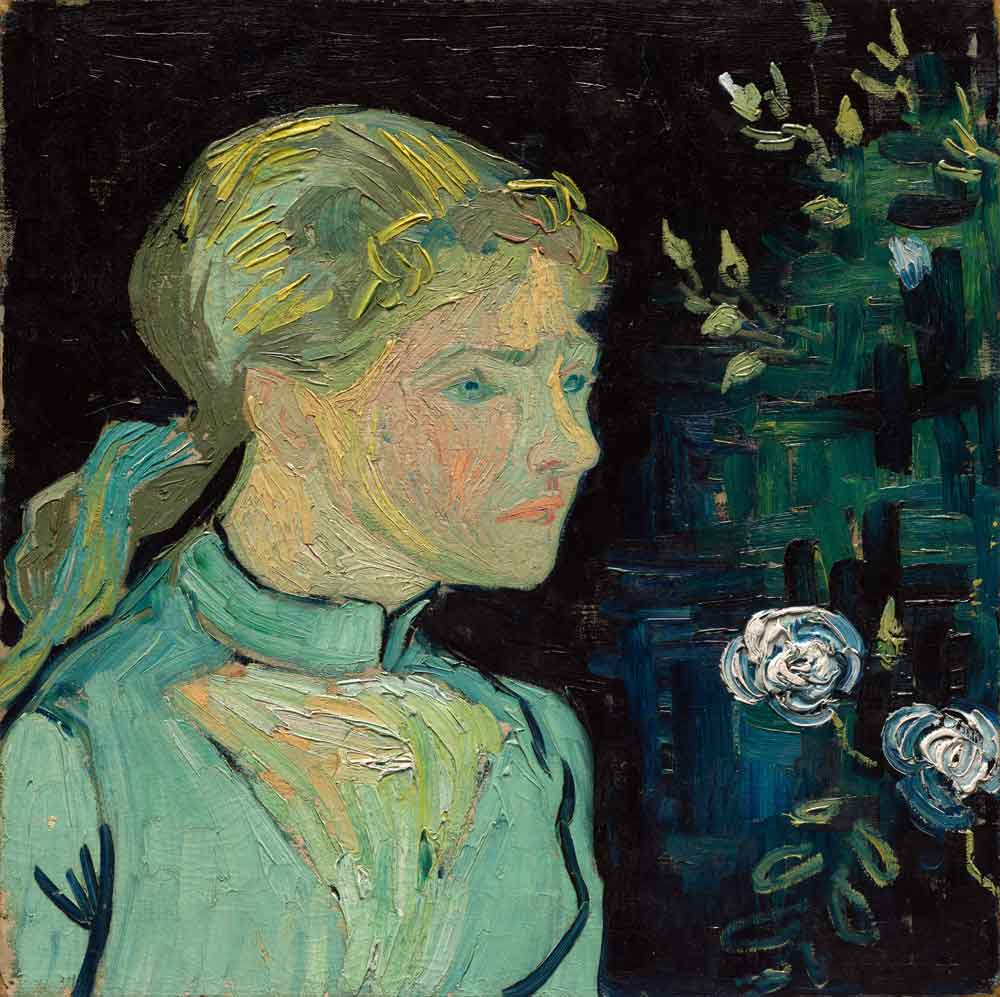
Gogh
Adeline Ravoux
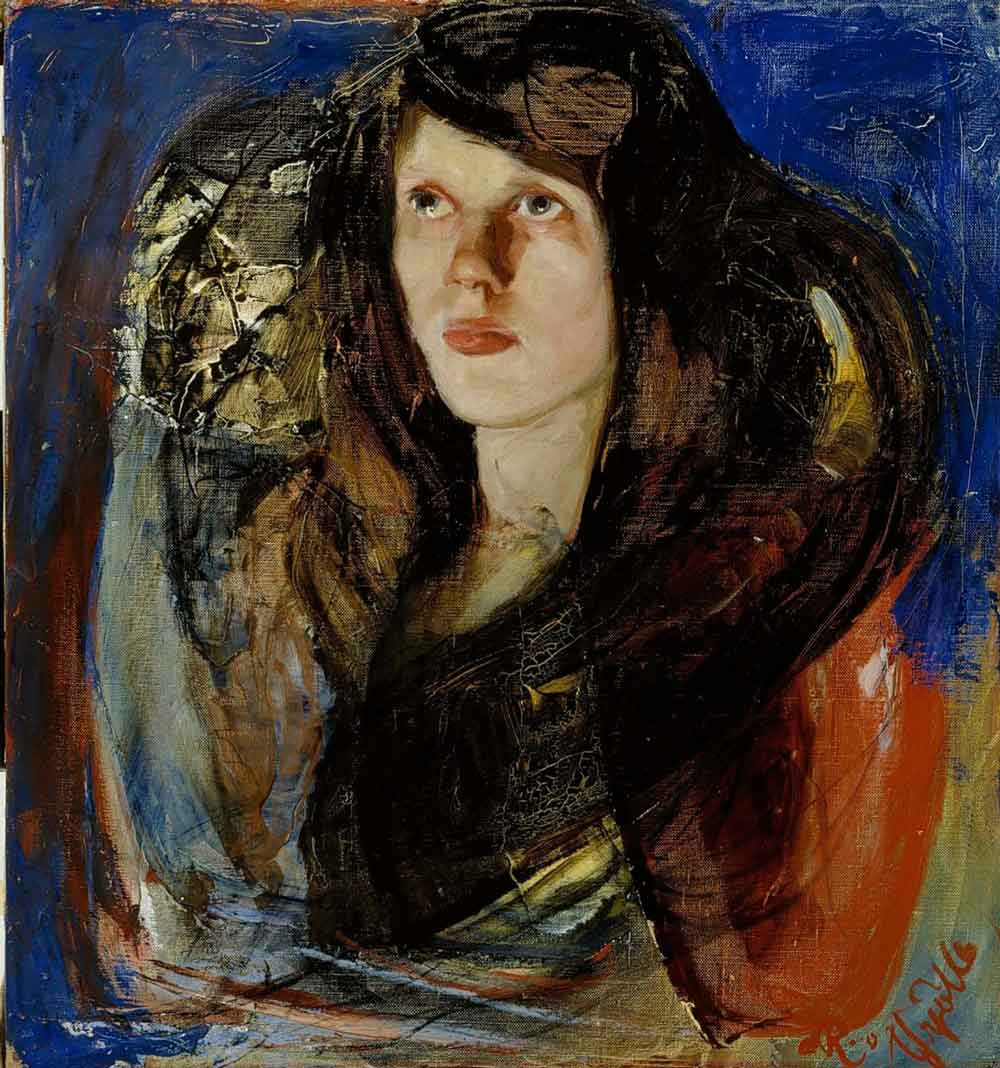
Love

Lady in White
Realistic Style
Portraits in the realistic style have three-dimensional elements, typical of artists such as Friedrich Amerling and William Morris. The sitters and their surroundings are depicted naturalistically, with depth cues such as overlap, relative size, shadow, and linear perspective.
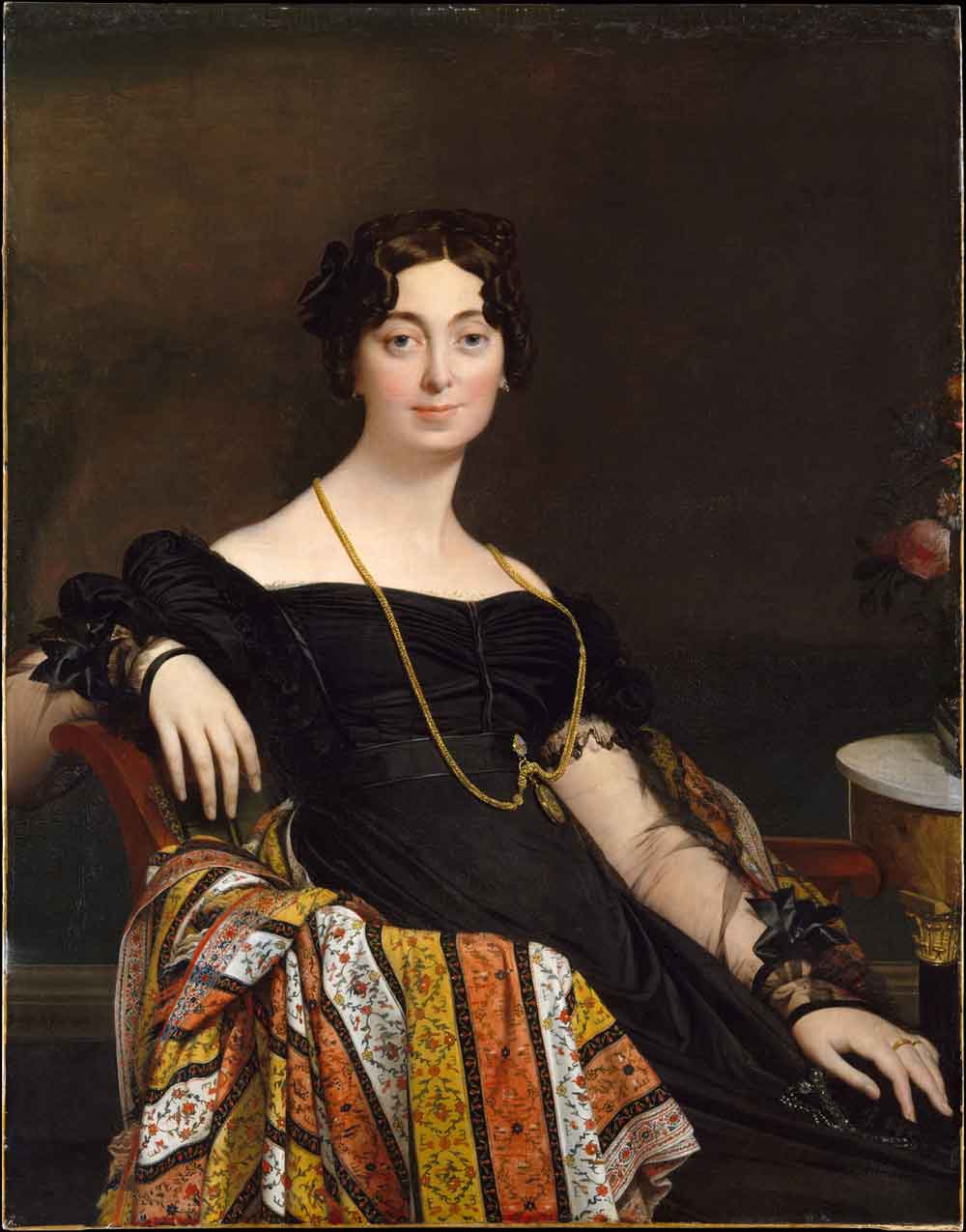
Madame Jacques Louis Leblanc
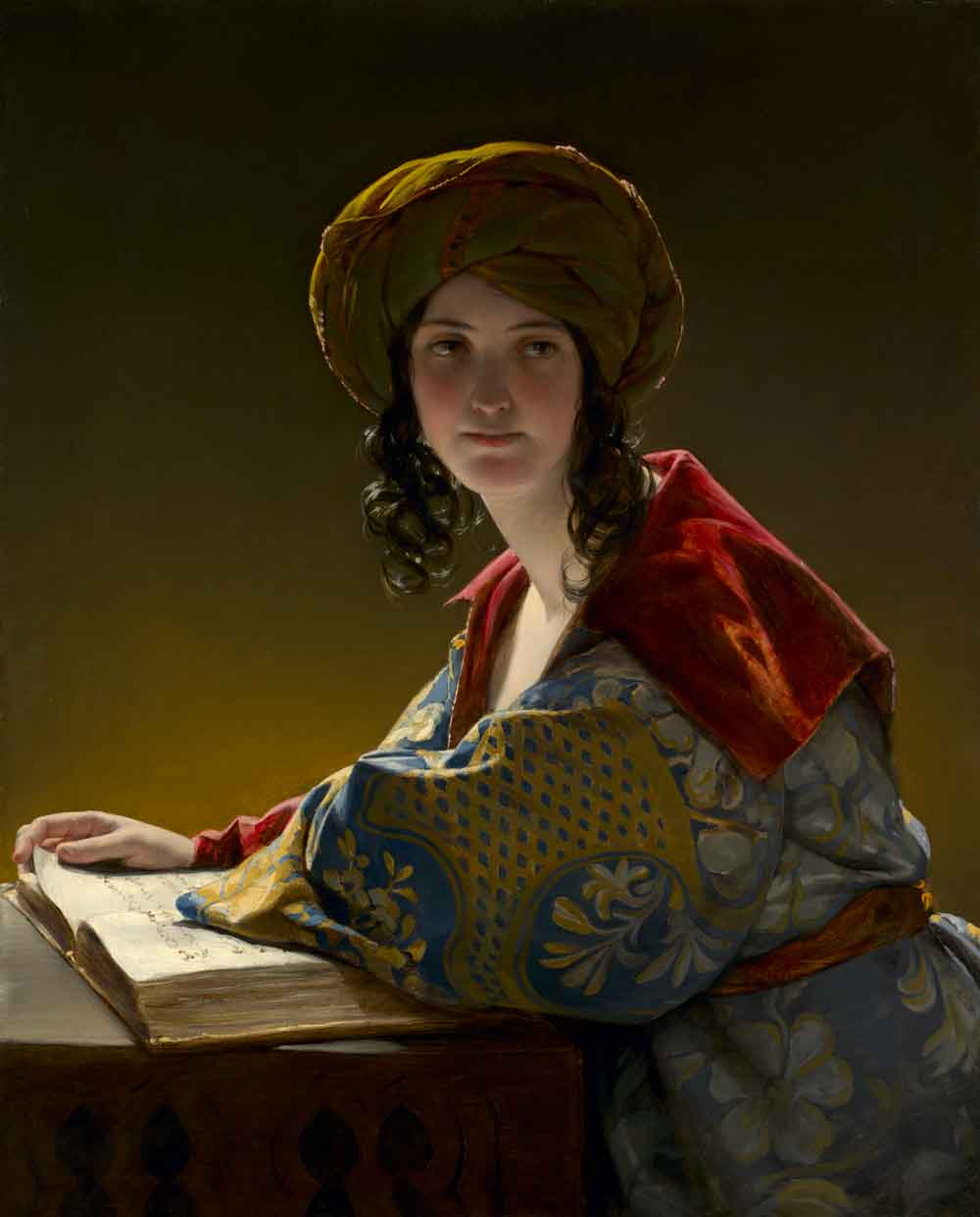
The Young Eastern Woman
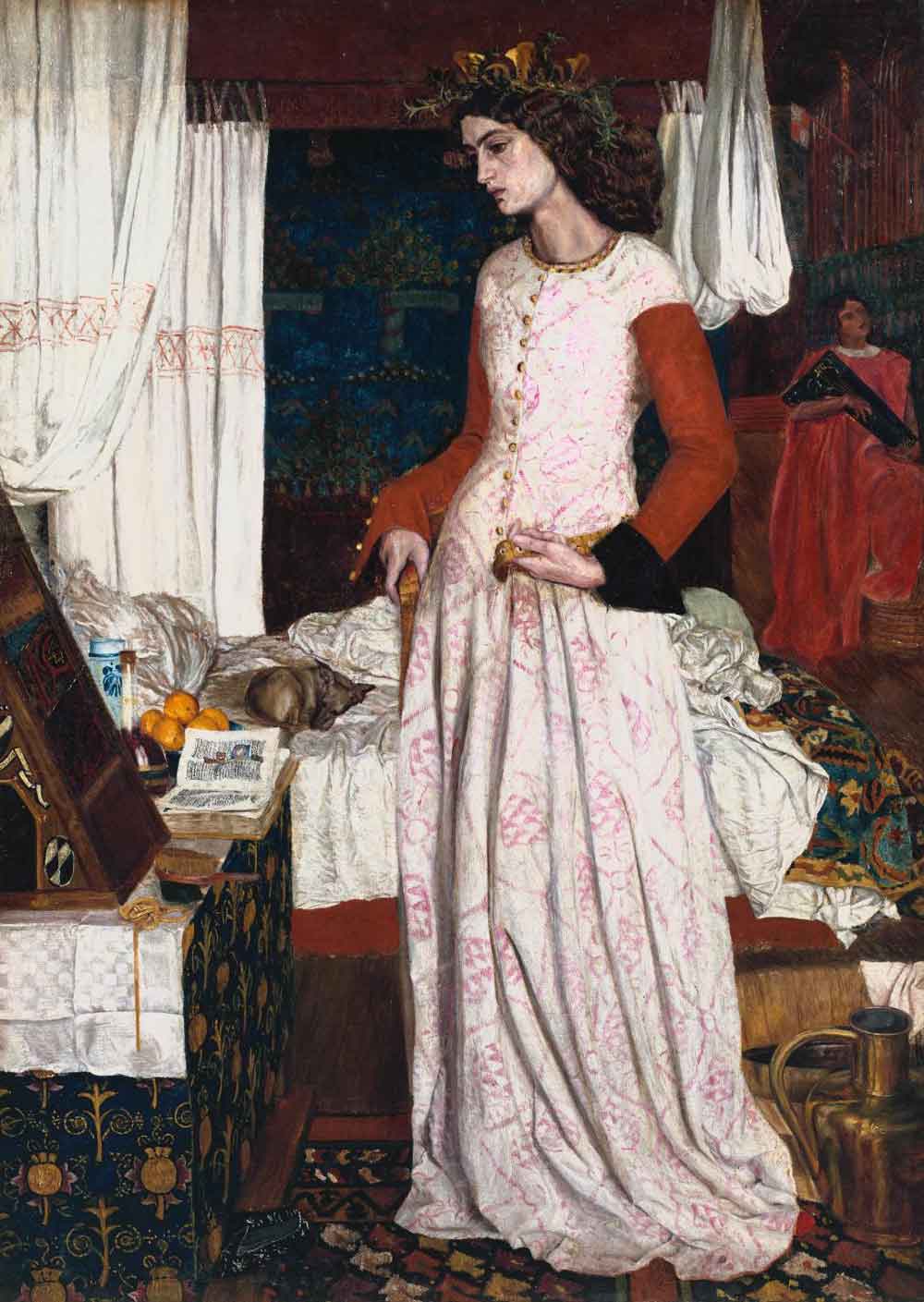
La Belle Iseult

Portrait of Marie
Breunign
Klimt’s Style
Paintings in Klimt’s signature, hybrid style have a combination of realistic, three-dimensional faces with flat, two-dimensional decorative contexts.
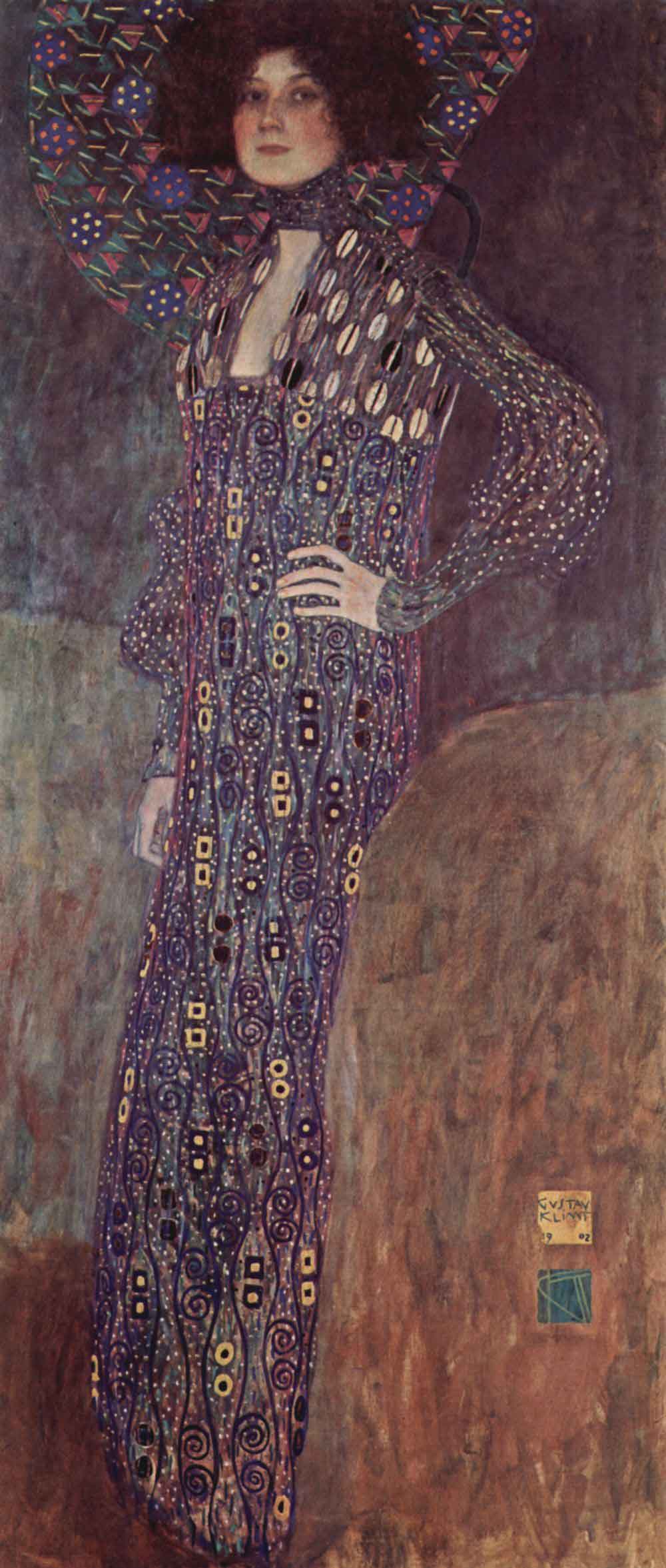
Portrait of Emilie Floge

Margaret
Stonborough-
Wittgenstein
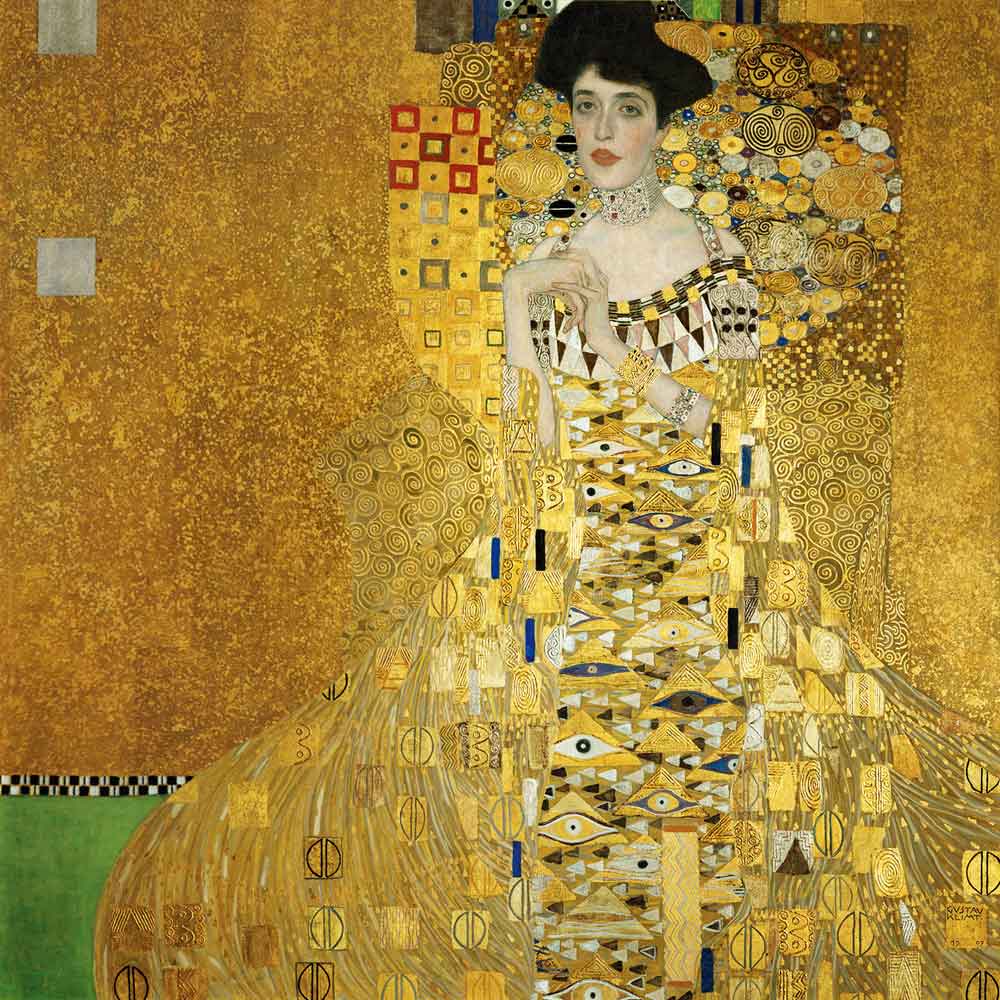
Portrait of Adele Bloch-Bauer
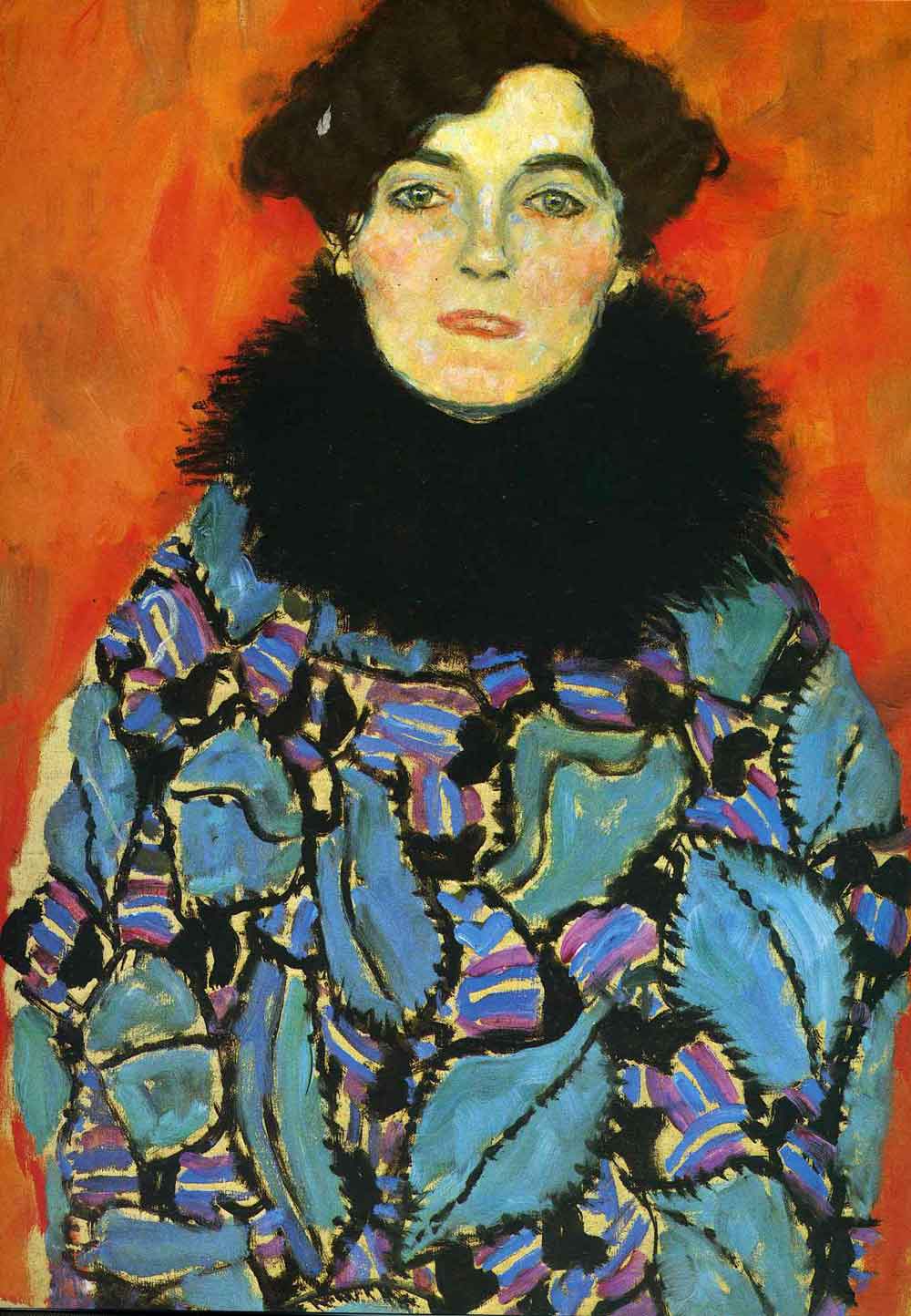
Johanna Staude
Eye-Tracking Results
To examine whether Klimt’s signature style elicits a unique response in the viewer, Anna Miscenà and her colleagues looked at two eye-tracking measures – fixation density and average fixation duration – for two key interest areas: FACE for the facial features and PATTERN for the background ornament. For example, in the Johanna Staude portrait below by Gustav Klimt, the yellow transparency indicates the face interest area while the blue transparency indicates the pattern interest area.
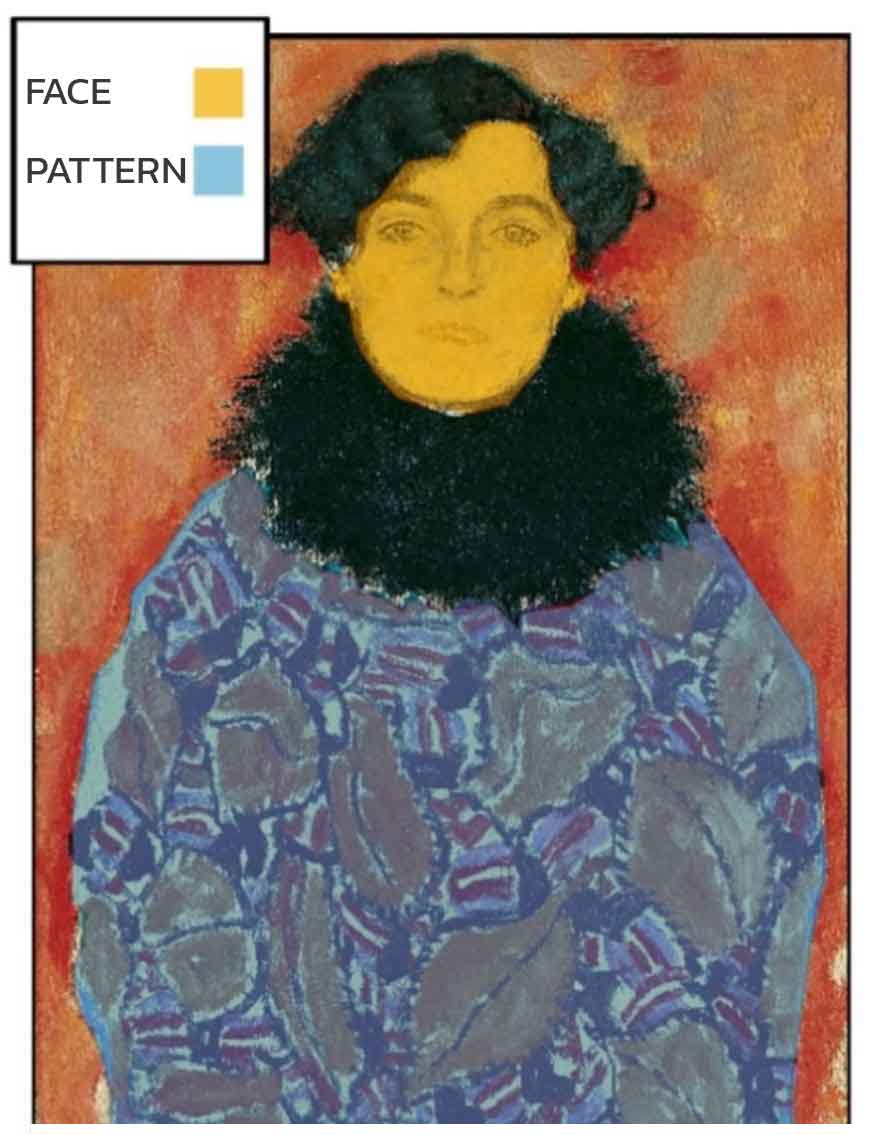
Are Viewers More “Absorbed” by Klimt’s Signature Style?
Generally, the results (see figures below) suggest that regardless of painting style – abstracted, realistic, or Klimt’s hybrid – people tended to fixate the face more often (as indicated by fixation density) and for a longer period of time (fixation duration) than the pattern. Thus, regardless of the specific differences between painting styles, the sitter’s features were of primary interest and the pattern secondary.

Importantly, when comparing the painting styles, the authors found that people fixated on the faces in Klimt’s hybrid paintings more often and for longer periods of time than the faces in the abstracted or realistic style. The authors suggest this is the case because the two-dimensional pattern emphasizes the realistic representation of the face. The contrast found in the hybrid style makes the realistic face more salient.
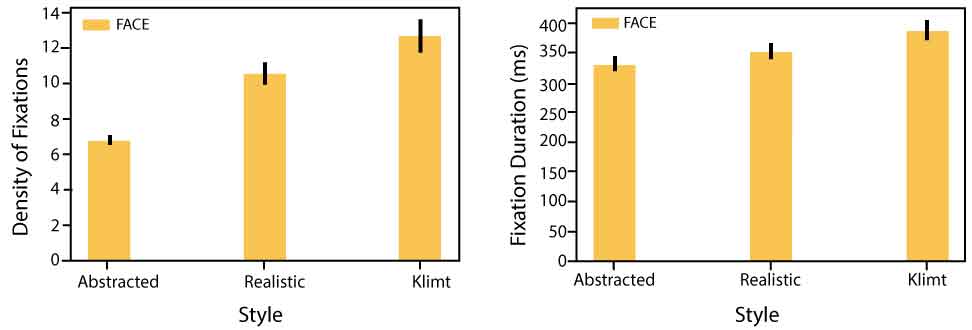
Although the ornamental patterns in the paintings were of secondary interest to faces, people still tended to fixate on Klimt’s patterns more than the patterns in the other two styles (left graph). Further, the average fixation duration for patterns was shorter when in the realistic style than the other two styles (right graph).
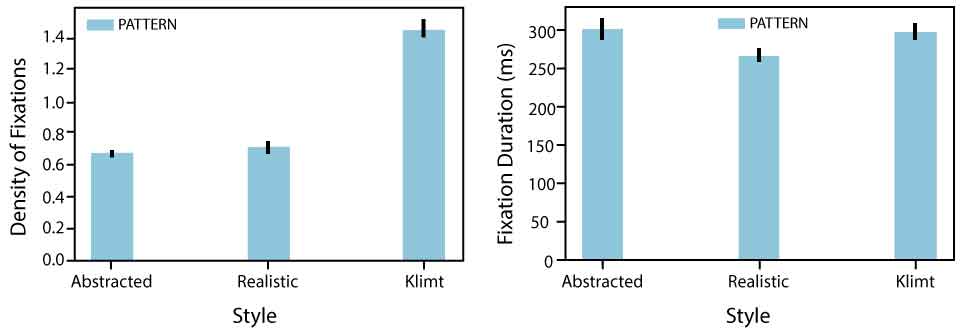
These results indicate that Klimt’s signature style as compared to the abstracted and realistic ones leads people’s eyes more to the faces and patterns and less to everything else in the portraits. In other words, Klimt’s three-dimensional faces juxtaposed on a two-dimensional patterned background “absorb” people’s gaze or attention more than other contemporary portrait styles.
Does Klimt’s Style Illicit a Particular Eye-Movement Pattern?
The eye-tracking data for the two interest areas together showed something interesting. Klimt’s faces and patterns garnered the highest density of fixations across styles. However, those fixations varied substantially in length. The difference between fixation duration for faces and patterns was highest for Klimt’s style, with longer fixations for faces than patterns. In other words, there is the co-existence of long gazes for faces and shorter scattered looks for patterns for Klimt’s hybrids. This particular gaze pattern was not evident with either the realistic or abstract painting styles.
Klimt’s Distinctive Style
Does the eye-tracking data indicate Klimt’s signature style elicits a unique response in the viewer? The data suggest that, in fact, people tend to look more often and for longer at Klimt’s faces. Further, Klimt’s patterns triggered a greater number of fixations than the other styles, suggesting that the important elements in Klimt’s signature portraits “absorb” people’s attention. However, the fixation time on the Klimt faces and patterns was substantially different. People tended to vacillate between longer fixations on the faces and shorter fixations on the patterns, suggesting a distinct physiological response. Anna Miscenà and her co-authors describe this response as a “two-fold effect on the eye“.
Contact
If you would like us to feature your EyeLink research, have ideas for posts, or have any questions about our hardware and software, please contact us. We are always happy to help. You can call us (+1-613-271-8686) or click the button below to email:

 2020 EyeLink Publication Update
2020 EyeLink Publication Update